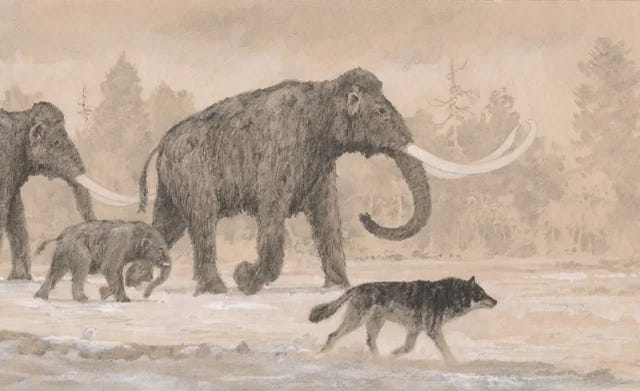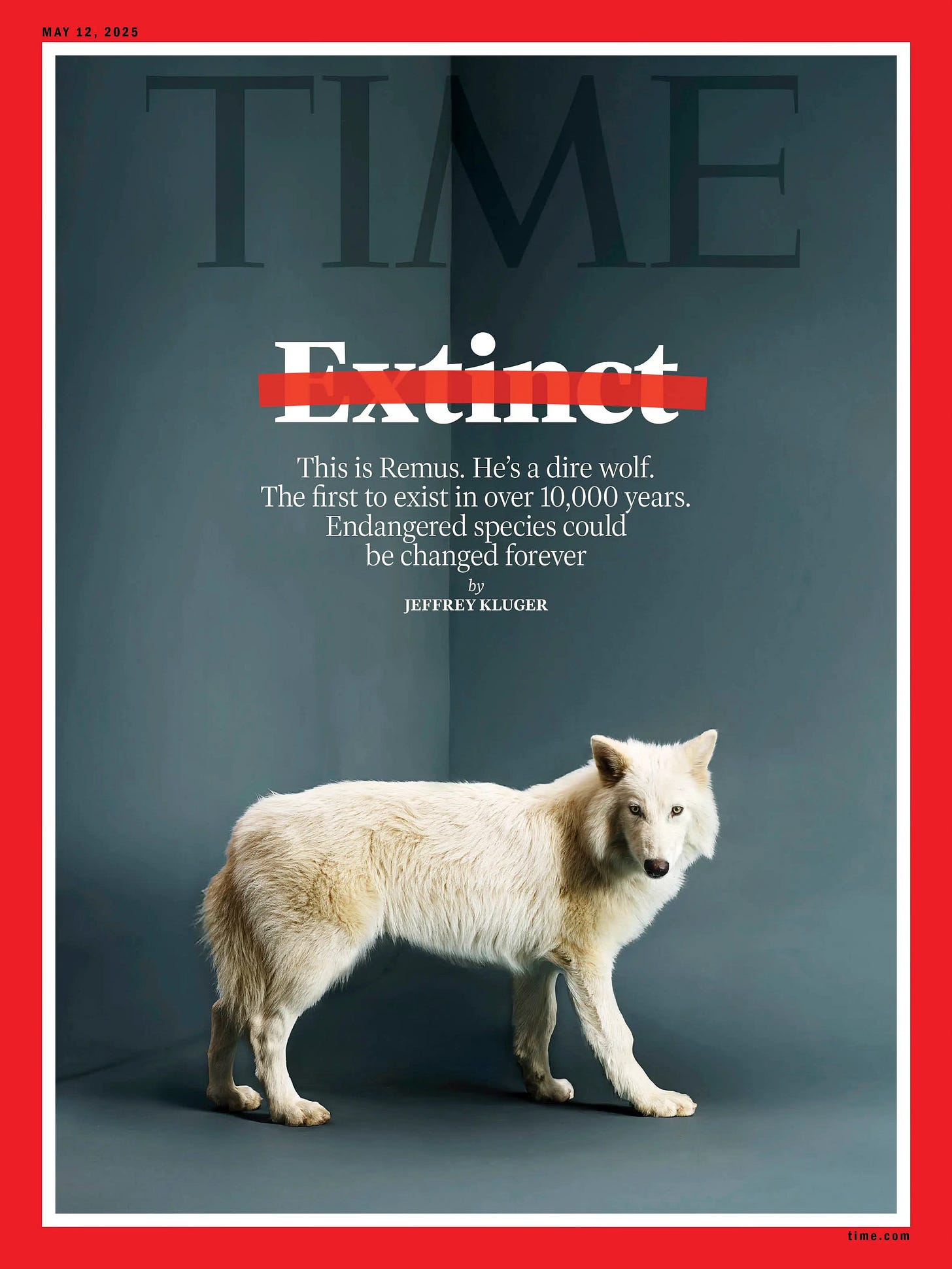When I first heard those howling dire wolves in the Instagram reel that went around the other day they sent a shiver down my spine. I marveled at those cute little fur balls, but instinctively moved my phone a little farther from my face. And it wasn’t just my association with Remus and Romulus from Game Of Thrones that was freaking me out. Those piercing shrieks were otherworldly. There was something alien-like about them, something that my nervous system seemed to pick up on, but my rational mind couldn’t identify.
It’s not often that I feel compelled to write about a topical news event, but there was something about this that made me feel the need to put my thoughts into words.
Colossal’s Chief Science Officer, Beth Shapiro, claimed to be speaking on behalf on humanity when she said, “We are an evolutionary force at this point. We are deciding what the future of these species will be.” But I’m not so sure she wasn’t mostly talking about her company. Because, yes, as much as I’d like to think that all of the wonderful biodiversity on this planet is cared for (or not) by the collective “We,” I’m also a realist who knows that the fates of all these beautiful species isn’t being decided by the conscious decision making of humanity as a whole - but rather by the momentum of our unconscious lifestyle habits.
While I would like to agree with her, I think that the use of the word “We” in her statement is questionable (and maybe a little deflective). In the context of her article, it’s pretty obvious that “We” applies to Colossal Biosciences. Doesn’t it feel like the decision to resurrect prehistoric predators is greater than one private company hiding out in an undisclosed location with an army of 130 scientists? I mean, it seems like too big a deal. (I’m not ashamed to admit that Jurassic Park has crossed my mind.) But it does feel like this kind of momentous leap into our ecological future warrants, at the very least, a public discussion, or a vote, or something. Especially since they’re already talking about Wooly Mammoths, Tasmanian Tigers, and the Dodo.
The other facet of this that I take issue with is why, when our current crop of modern wildlife species are facing so many threats, with many species on the verge of extinction, are we bringing back prehistoric animals, which may or may not even be able to adapt to the modern world (Colossal is already talking about re-wilding the wolves - potentially in North Dakota. And who knows what they’d do with a few Wooly Mammoths?), when we could be focused on protecting the animals still trying to eke out an existence in the Anthropocene?
It’s true they are working on a program to protect the Red Wolf population in North Carolina by genetically engineering what they call a “Ghost Wolf” that could help fortify the population there with a gene line containing new DNA. But it feels like a secondary concern for the company, not to mention another high stakes gamble to control the natural order through genetic modification. There are countless examples of well-intentioned introductions (or reintroductions), of species that have become highly invasive and destabilized the host ecosystems, or decimated the populations of other animals in those ecosystems.
Are we sliding down a slippery slope none of us even asked to set foot on? Where do we draw the line with playing Creator? And I can’t help but to wonder, what’s even the point of bringing back a prehistoric species, other than for spectacle?
The Time article finishes with a quote by Theodore Roosevelt: “In the moment of any choice, the first thing is to do the right thing. The next is to do the wrong thing. The worst is to do nothing at all.” I’m not convinced we’re in that moment of choice.
I’d love to hear your thoughts on the dire wolves in the comments or in an email! What a fascinating time we’re living in. As always, thanks for being here and reading my newsletter. I hope you enjoyed my little rant.
Thank you friends,
Matt



